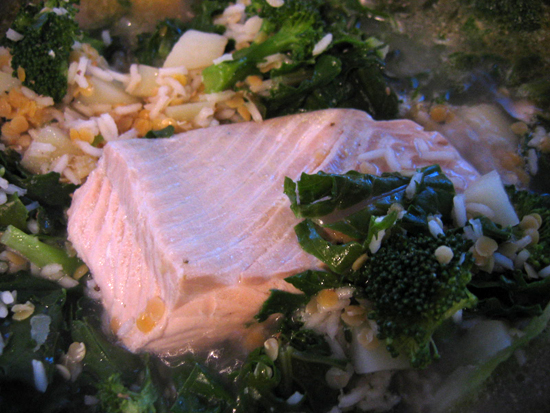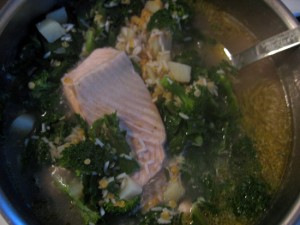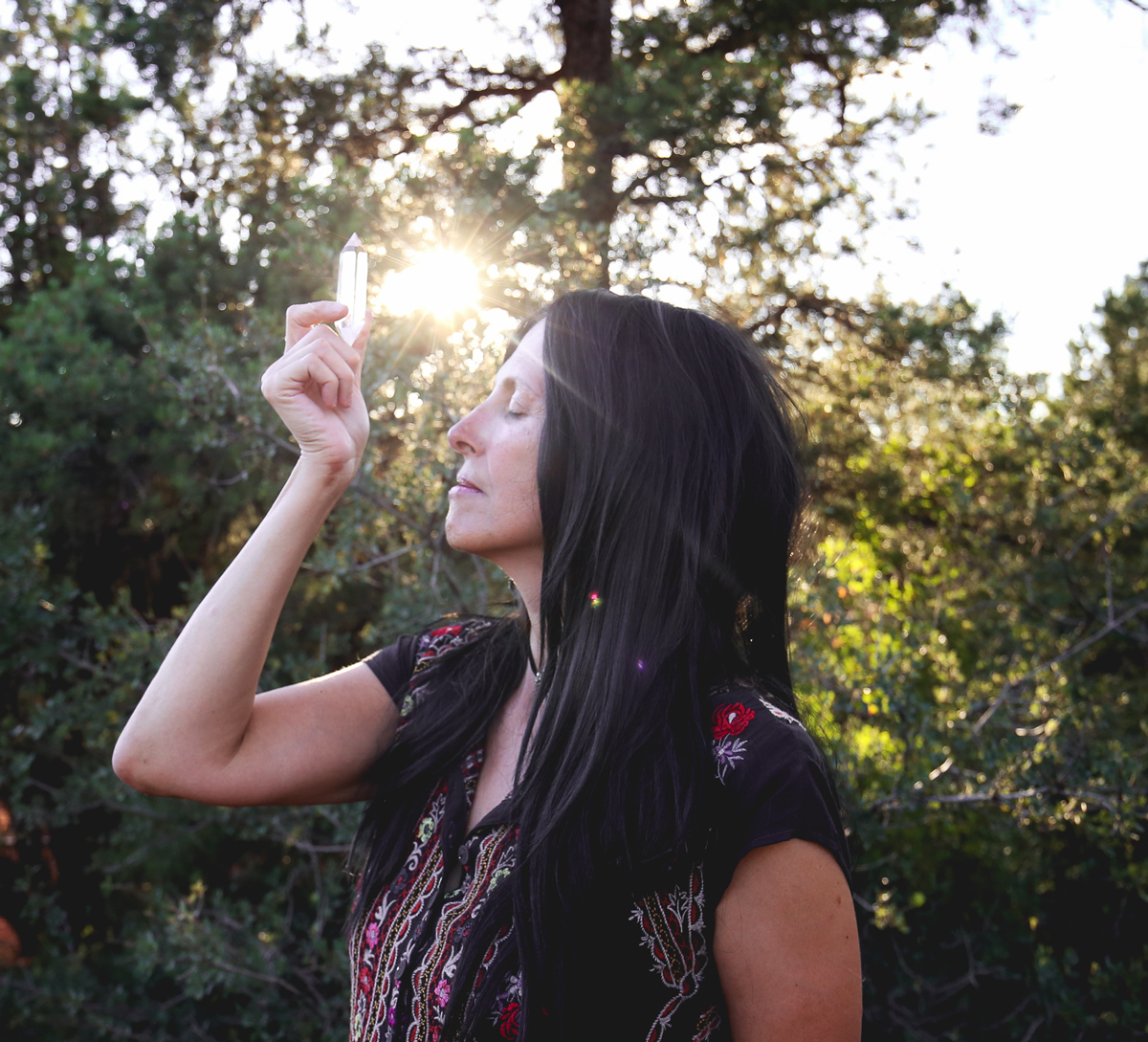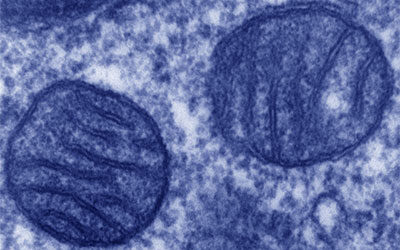
There is a lot of confusion, apprehension, and fear swirling around the Internet following Friday’s earthquake, aftershocks and tsunami in Japan, which may have caused nuclear power plant meltdowns in several locations. If this turns out to be the case, those on America’s west coast may be in the direct path of a radioactive plume in the coming days or weeks. Should we all stock up on potassium iodide (KI), a form of iodine that can be used to “fill up” the thyroid’s store and prevent the uptake of radioactive iodine from fallout? Is there anything else we can do to protect ourselves from the effects of radiation?
I looked into this myself over the past couple days since I live in Arizona and could potentially be in the path of any radioactive plume coming our way. What I found is that potassium iodide has a certain amount of risk involved in taking it. The Center for Disease Control (CDC) warns:
Adults: Adults older than 40 years should not take KI unless public health or emergency management officials say that contamination with a very large dose of radioactive iodine is expected. Adults older than 40 years have the lowest chance of developing thyroid cancer or thyroid injury after contamination with radioactive iodine. They also have a greater chance of having allergic reactions to KI.”
Oi, what’s a 40+ year old girl with severe and extensive food allergies to do?! I decided that for now, my exposure risk is low enough that I would just focus on an iodine-rich, radiation-protective diet going forward, starting…tonight! It’s not just the thyroid we have to worry about and protect; all other organs and tissues can be affected by radiation. The obvious additions to my meal plan: miso, seafood, and seaweeds – such as kombu, wakame, kelp, dulse, and nori.
The not-so-obvious additions:
- Mineral-rich nettles infusions – High in iodine, as well as many other nutrients including vitamins A, B complex, C, D, E and K, iron, calcium, magnesium, potassium, chromium, silica, silicon, selenium and sulphur.
- Burdock root (Arctium lappa) – Removes radioactive isotopes from the body.
- Orange and dark green vegetables like kale, spinach, collards, sweet potatoes, winter squash – According to herbalist Susun Weed, “Japanese researchers found that diets high in carotenes significantly reduced DNA damage in humans exposed to radiation. Supplements of beta-carotene (or of vitamins C or E) did not show this effect. Eating lots of orange and dark green foods (sweet potatoes, winter squash, beets, carrots, kale, collards, chard, and spinach, for example) can protect you from radiation-induced cancers.”
- Broccoli, cabbage, mustard greens, arugula, cauliflower, bok choy, and other cruciferous vegetables – Brassicaceae or Cruciferae, also known as the crucifers, the mustard family or cabbage family is a family of flowering plants that can help protect your cells from radiation damage.
- Dried beans such as lentils and mung beans – Contain protease inhibitors, known to block and prevent formation of tumor cells. According to herbalist Susun Weed, dried beans can even reverse DNA damage done by radiation.
- Anchovies – High in iodine and calcium.
- Black and green tea – In Fighting Radiation and Chemical Pollutants With Foods, Herbs and Vitamins: Documented Natural Remedies That Boost Your Immunity and Detoxify, Steven Schechter says that both black and green tea showed “radioprotective effects” whether taken before or after exposure to radiation.
Susun Weed shares a lot of other wonderful radiation-protective food, herb, and lifestyle tips in her column Antidotes for X-Rays on Planet Thrive.
I decided to make a nutrient-packed anti-radiation soup for dinner tonight. I am completely winging it – no recipe, no amounts, no clue how all these ingredients will mix together! Admittedly, you probably could forego the potatoes, broccoli, lentils and rice and still create a deliciously nourishing dish.
 Anti-Radiation Miso Soup with Kombu
Anti-Radiation Miso Soup with Kombu
ingredients
(1) clove garlic, finely chopped
1/2″ ginger, finely chopped
handful black peppercorns, smashed
several dashes of seaweed gomasio
(1) strip kombu seaweed, cut into small bits
(1) potato, diced
(1) head broccoli, cut into small florets
(1) bunch of kale, cut into small strips
1/4 cup red lentils
1/4 cup basmati rice
2-3 liters filtered water, depending on how thick you want it to be (the rice will soak up some of the water)
(1) piece wild Alaskan King Salmon
(1) tablespoon white miso per serving
olive oil as needed
(1) bunch scallions, thinly sliced, for garnish
directions
- Sauté garlic and ginger in olive oil in a big stock pot.
- Add diced potato and brown on all sides.
- Add water, broccoli, kale, lentils, gomasio, pepper, kombu, and rice.
- Bring to a boil then simmer for ~30 minutes, covered, until lentils and rice are cooked through. Add salmon ~10 minutes before done. Check to make sure salmon is cooked through.
- Pour into bowl, adding scallions and miso to taste. Note: Do not add miso to soup while liquid is on heat or boiling or you will kill the good bacteria in it.
Makes 4-6 servings
As common sense dictates, if you have a thyroid condition or have trouble tolerating iodine, please consult your physician before adding iodine-rich foods to your diet.










Warning: This is a very heavy meal. Remove the potatoes, broccoli, rice, lentils and/or salmon if you want lighter fare! With just the kale and seaweed you can still make a nice, nourishing miso broth. This recipe tastes delicious and hearty, without a strong miso flavor – definitely not a traditional miso recipe. The “1 tablespoon” of miso is per serving and this dish makes 4-6 servings….you add the miso after you put the soup in the serving bowl, so as not to kill the good bacteria.
Please share alternate versions of miso soups and other iodine-rich meals below! When I went food shopping today, I also picked up some Sea Gift’s Seaweed Snacks from Korea. They are all natural, with a high mineral content – a very tasty (and addictive) way to add iodine to your diet.
Note: When I made this, I used 2 liters of water, 1/2 cup of lentils and 1/2 cup rice. It turned out very thick – the rice soaked up a lot of the water. If I was to make it again I would halve the rice and lentils or add more water. I changed the rice and lentil amounts to 1/4 cup above to reflect this and added a note about the water. Use your intuition folks!
Julie, thanks for clarifying the info on iodine, and sharing the great recipes. I am soy sensitive with issues with my thyroid already, my seaweed of choice is to add small doses of Maine Coast (Organic) DULSE FLAKES to our meals. Uncooked I take a pinch of it in the morning, and will sprinkle some on my dinner, too.
Kombu is an excellent source for soups. We’re in Washington, so the need for anti-radiation foods and practices will be very helpful. I’ll also check Susan Weed’s link as well.
Take care,
Mokihana
Thanks for posting Mokihana. Are you sensitive to all soy products? Just wondering, because I have issues with processed soy like tofu. But am unaware if miso, tempeh and other fermented soy foods will cause the same problems. I will keep an eye out for hormonal issues. I bought some Maine Coast Dulse Flakes yesterday, too! I use my Eden Seaweed Gomasio a lot, too. I also take Trace Minerals Mega-Mag which contains many trace minerals including iodine. I put 1-2 drops in every glass of water I drink.
I’m hoping I’ll be okay with these measures…and will pray for you and Pete and all the others in the Pacific Northwest, especially those with MCS and other health issues that might make taking iodine difficult. But as I mention above, it’s not just the thyroid to be concerned about, and there are plenty of other foods you can eat to help your body do its best to stay cancer free. xxx
This is the best info I have come across. Have been letting many people know of this site.
Thank you .
Here is a great product for everyone to try out!
I guess its not in stores yet, but I am hoping to see it on http://www.amazon.com
http://kurakonusa.com/japanese_delight/onthego/index.html
hi,
thanks for the useful info.
before i read this, we had miso soup with kombu, brown rice, and shungiku for lunch today.
on the way home i went past one of our local “natural grocery” stores, and was very surprised to see that there was still plenty of kombu and nori on the shelves. i got two large packs of each.
we live in tokyo, but are not freaking out yet. worried, yes.
btw,
thanks to your blog, i will make a point of buying more gobo, and investigate the nettles infusions…
cheers!
We are looking for Gobo here on the island, to add to soup and might find the chopped up burdock in the bulk section. Any soy products are difficult for me, but like you said, the whole body nutrition is most important.
I spend time daily doing a body scan and treatment using NAET clearings to keep my thyroid clear. I carry a vile of TS3 and TS4 (a bottle of water with the energy of TS3 TS4) and test my requirement for clearing or booasting. Every little bit helps, and that’s just what we’ll need..
Thanks for these nutrition tips!
Thanks for sharing Stephen. I didn’t realize burdock root was known as gobo so thank you for teaching me something new today. Wishing you and yours the best. x Julie
Very cool that you are using NAET for your thyroid Mokihana. Thank you for sharing your very intuitive approach to your own health care. I love when everyone shares what works for them. This is the magic of the Internet, that we have access to all this collective wisdom in an instant. Sending love to you. x Julie
I just made a variation of this soup – a less hardy version but really, really delicious!
Miso Soup with Stinging Nettles
(1) onion, chopped
(1-2) cloves garlic, finely chopped
(1/2″-1″) piece of ginger, finely chopped
(1) potato, cubed
(1) daikon, cubed
(1) carrot, diced
(1-2) handfuls fresh stinging nettles
~4-6 cups water
olive oil as needed
dash of smashed black peppercorns
dash of sea salt
• Put gloves on hands before washing and trimming nettles. Remove stems and roughly chop leaves into bite sized portions. Set aside.
• Saute onion in olive oil in a big stock pot until translucent/caramelized.
• Add garlic, ginger, black pepper, sea salt, cubed potato, daikon, and carrot, and saute a bit longer until all spices and vegetables slightly browned.
• Add water and carefully washed nettles (remember to always handle raw nettles with gloves to avoid getting stung).
• Put lid on stockpot and bring to a boil. Then lower heat and simmer for ~45 minutes.
• Add ~ 1 tablespoon of white miso to each serving after removed from heat (to avoid killing the good bacteria in the miso, which is a fermented soy product).
• ENJOY!
A word of caution: kombu is renowned for its glutamic acid content. In fact, it is touted by the Umame Information Center. For those who don’t know, umame is the “fifth” taste sense, or the ‘taste’ of MSG, which doesn’t really taste.
Kombu has an extraordinarily high level of glutamic acid:
http://en.wikipedia.org/wiki/Kombu
I love miso and Japanese cuisine as much as the next person, but I draw the line at what I consider a healthy part of my diet, and significant sources of glutamic acid is definitely out!
I forgot: iodine is definitely worth adding to our diets though. I add use Lugol’s Solution.
thankyou so much !
This information is AMAZING !
Very practical, affordable, & even if others have their own opinion about certain products like kombu,, ( which is all good, cuz a little research on our own parts would only do good…) i definately learnt something from this blogg ! :D
appreciate your sharing ;;
one <3
About Tofu.
Dr. Mercola, the health hero says, that any unfermented soy products are harmful to human health. That includes Tofu, soy milk, soy oil etc.
The one and only way to take soy safely is fermented way.
Human health benefits from fermented soy.
Hi Julie,
Nice to hear you have healed.
Is there any people living around you?
Any village, society etc?